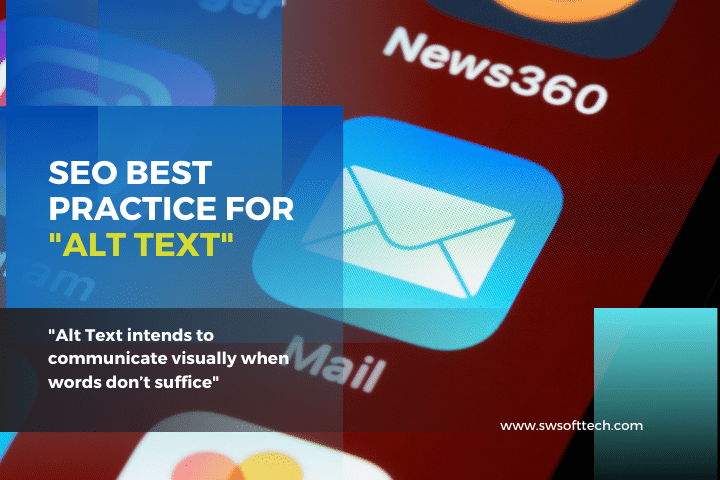Alt text, or alternative text, is an essential aspect of web design that you may be unaware of if you’re new to website creation and maintenance. Understanding how to create good alt text will help your website rank higher in search engine results pages (SERPs) and make it easier for visually impaired users to get around your site and engage with content. Further, this blog shows the SEO best practices for alt text. And how doing so will help your visitor to understand your content better.
Alt Text
The alt attribute was designed to serve two purposes: to improve accessibility and usability by providing descriptive text in place of non-text content and to provide information in situations where images are not accessible or cannot be displayed. In addition, alt text intends to communicate visually when words don’t suffice.
Essentially, using an image as a graphical link is one way of using a secondary text description instead of an actual visual link—that is what alt text provides (among other things). But, of course, you have to know your audience to write effective alt text.
-
Alt Attributes
An image alt attribute is an element in HTML that describes or identifies a specific image. When there are images on a page, you need to write what each of them is there for so that people who don’t see those images can understand your page better.
“Imagine reading a book and having all of the descriptive information about objects in between paragraphs REMOVED; you would have no idea what was happening in that story!”
Also, if visually impaired users land on your page, it will be very hard for them to figure out what’s going on with your content.
-
Title Attributes
Title attributes are an excellent way to add additional information about your images and can help search engines better understand what each image is about. If you’re working directly with HTML and CSS code, which many web designers do when writing and developing websites, adding alt= before your text will ensure that all of your images have title attributes.
Alt Text and SEO
Although you probably don’t want to stuff keywords into alt text unnecessarily, alt text offers an opportunity for some subtle keyword-stuffing. After all, if a picture is worth a thousand words, then its corresponding alt text has plenty of room for keywords. Including your primary keyword in the alt text is one way to ensure that your page content and images both benefit from SEO best practices.
However, you also have to be careful not to overdo it—otherwise, Google might think you’re using sneaky tactics and penalize your website with lower search rankings. The same can be said for stuffing keywords in H1 tags or other HTML elements around each image on your site—Google will notice!
How to Use Image Alt Text
Search engines can’t read pictures, so web pages with images include alt text—short descriptive text for each image. Alt text should be unique for every image on a page and accurately describe what people will see when they visit. Using alt text is the best practice for both search engines and accessibility; when used correctly, it gives users a better idea of what’s on your site and how to interact.
Best practices for writing alt text include using about 100 characters or less per image. Use keywords whenever possible, but don’t keyword stuff – keep it natural-sounding. Give context to describe why an image is there – many images are there simply to look pretty! But, of course, sometimes that doesn’t require alt text!
Words to Use in Alt Text
In images, the alt text is used to describe the image to someone who cannot see it. It might be a search engine or screen reader. The alt text isn’t the image filename, so don’t take that. What can you write that describes the image?
For example, if an image is of your company mascot, then you could use The company’s mascot in the alt text. Or maybe it’s a picture of your product so that you could use a Product picture. But, of course, it all depends on what words most accurately describe what the image contains, and that can sometimes change depending on what screen reader or browser you’re using.
Wrap Up
Use compelling alt text on images to bring better search results. Alt-text is an often overlooked feature of images, but it’s an important element for SEO best practices and accessibility. If you have time, write three or four more paragraphs about things like keywords, content generation, and so on. To optimize your alt texts for SEO purposes, use targeted keywords in your alt texts when possible.







